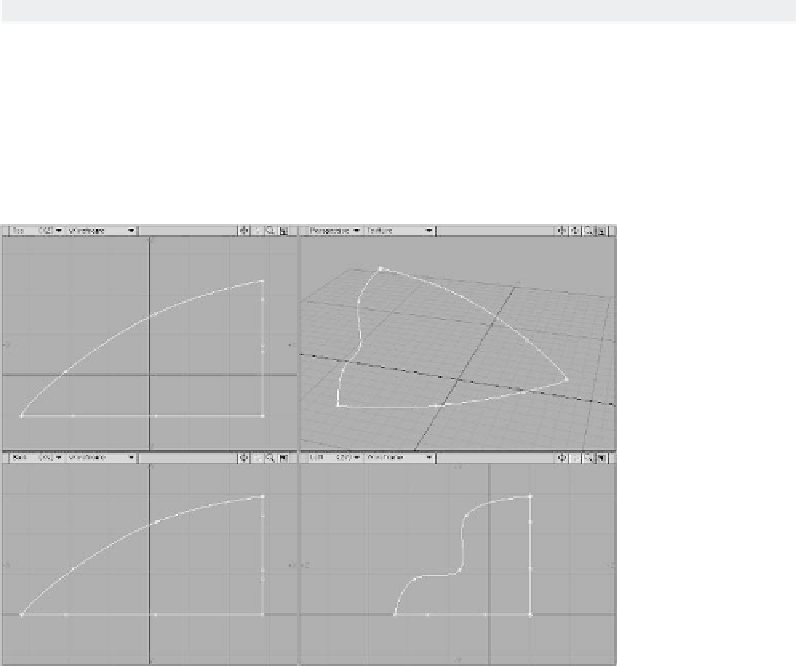Graphics Programs Reference
In-Depth Information
The rules are:
•
Spline modeling in LightWave is not
real time. You must use your splines to cre-
ate polygonal “patches,” which, if General
Options | Polygons is set to Quadrangles,
you can use as sub-patches later, if you
wish.
•
Spline patches can
only
be generated
from areas defined by three or four curves.
•
The ends of each curve that define an
area must be welded to the ends of its
neighboring curves. (When you have one
curve selected and you use Select
Connected, your
entire
area to be patched
will become selected — if you've done
things right!)
•
Knot placement (the points that define
a curve) is
excruciatingly
important. (Preci-
sion modeling is achieved by Modeler doing
a “connect-the-knots,” as it were. So, when
making defining areas with your curves, be
precise and aware of your “knotwork.”)
•
The
order
in which you select the
curves to be patched affects how Modeler
creates the patch.
•
“Automation” can
rarely
be trusted.
Three-Curve Patches
Just to keep us all on the same page while
we're working with these tools, I've created
a couple of examples for us to work from.
Load
Objects\Chapter12\SplinePatch-
Examples.lwo
. On the first layer, you'll
see the spline “cage” shown in Figure 12-1.
Notice that the ends of the curves in
Figure 12-1 have all been welded to one
another and the two long, smooth curves
both have the same number of knots.
Figure 12-1





